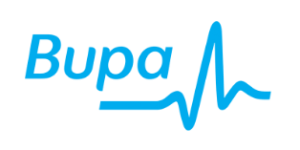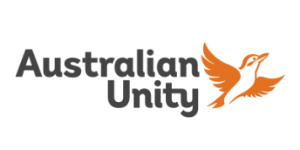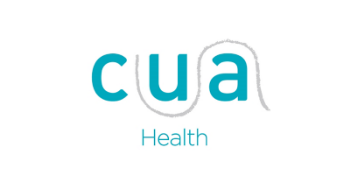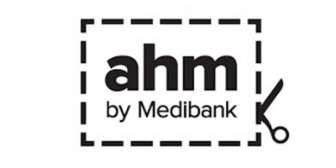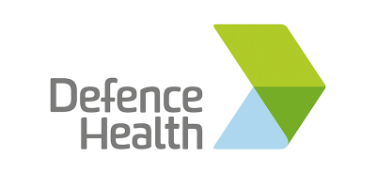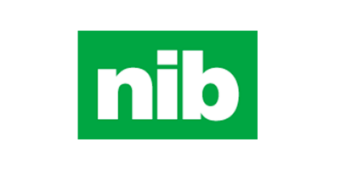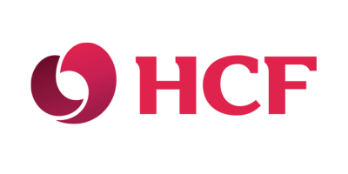Dry Needling Brisbane
Are you searching for Dry Needling in Brisbane? Knead Massage has qualified Myotherapists and Remedial therapists in Brisbane CBD ready to provide Dry Needling. You can have Dry Needling as part of a Myotherapy or Remedial treatment, or as a stand alone session. If you have it as part of Myotherapy there is no extra cost, there is an additional cost if you have this as part of a Remedial Treatment as it is considered an add on service.
What is Dry Needling?
Dry Needling is an effective technique for the treatment of muscle pain and spasms. Dry Needling Brisbane involves inserting a fine filament needle (the same needles used in acupuncture) into the irritable part of the muscle – known as a “Trigger Point’. The spot is painful to pressure and can refer pain elsewhere, as well as reducing range of movement.
Myofascial trigger points are commonly seen in both acute and chronic pain conditions like tension headaches, back pain, neck and shoulder pain.
FAQ Booking Options
The aim of Dry Needling is to achieve a local twitch response (a sensation like a short muscle cramp), to relax the overactive muscles. The needle is very thin and most people don’t feel it entering the skin, consequently treatment is intended to be comfortable and painless.
Dry Needling approach is based on Western anatomical and neurophysiological principles. It should not to be confused with the Traditional Chinese Medicine (TCM) technique of acupuncture. Acupuncture and Dry Needling only share the same tool – an Acupuncturist is practicing a traditional medicine system, dry needling practice is based on recent science.
Our experienced Clinical Myotherapist Roger Morelli, Advanced Myotherapist Wang and Advance Remedial Therapist Makira are qualified to provide expert Dry Needling and comply with all health guidelines in Dry Needling delivery and hygiene.
Dry Needling Brisbane – Is it Safe?
As with any bodywork there is a minor risk of injury and this is why we only allow therapists to administer Dry Needling if they have qualifications in Dry Needling. A clinician must have a high level understanding of anatomy to identify the appropriate points and avoid nerve tissue.
To have Dry Needling as part of your treatment you will need to provide written consent.
As the needles are very fine and not inserted very far into the tissue the treatment is safe as long as the proper guidelines are followed. Our Dry Needling Therapists have excellent anatomy knowledge.
What Conditions can be treated?
- Headaches (cervicogenic and tension)
- knee cap pain
- TMJ pain and tension
- calf tension
- hamstring tension
- gluteal pain
- piriformis syndrome (sciatica)
- sciatica pain
- muscle spasms
- frozen shoulder
- fibromyalgia
- office related arm pain
- mortons neuroma
- plantar fasciitis (fasciopathy)
How do I book a Dry Needling Appointment?
You can have Dry Needling as a stand alone appointment, as a Remedial/Dry Needling combination or as part of a Myotherapy treatment.
As part of a Remedial Treatment & Assessment
Combine Dry Needling with Remedial Massage. We have a range of treatment times available with both Senior and Remedial therapists. You can book a treatment here.
Book your Remedial/Dry Needling Treatment here
As part of a Myotherapy Treatment & Assessment
For more complex or chronic issues (problems that you have had for a while) you will need to book an Initial 60 Min Myotherapy treatment. This will include thorough assessment, needling, soft tissue work and post treatment advice. You can book this here.
Book your Myotherapy Treatment here
As a Standalone Appointment
Dry Needling can be a standalone appointment for specific areas. This is best for those who have had dry needling before and found it effective, or are familiar with their specific issue, and don’t require a lot of assessment for their problem. For this we feel 30 minutes is enough time. You can book a 30 Min Dry Needling appt with a Myotherapist here, or Remedial therapist here.
Related Posts
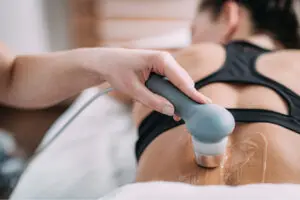
Low level laser therapy
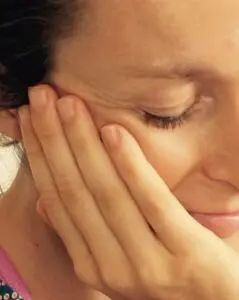
TMJ Pain Brisbane
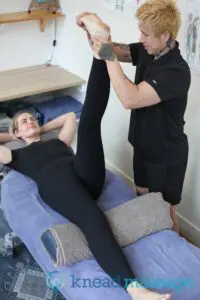
Sciatica Pain Treatments
Frequently Asked Questions (FAQs)
Is dry needling safe?
When performed by a suitably trained and qualified individual such as a Myotherapist – dry needling is statistically very safe with few recorded negative outcomes. Specific Myotherapy training for dry needling is extensive – lasting between 3-12 months and involving hundreds of clinical hours.
Is dry needling effective?
Dry needling without electro can be very effective for many conditions including neck and shoulder tension, calf and hamstring spasm, glute pain, piriformis syndrome, forearm pain, hip flexor tension, TMD (tempro mandibular disorder) and tension headache. With the addition of electro (TENS) to the needle nerve conditions such as Morton’s neuroma, Bells Palsy, Sciatica,Trigeminal Neuralgia and cervical radiculopathy, carpal tunnel are easily managed.
How deep do the needles go in dry needling?
This depends on the size of the patient and region being needled. Generally 15-20mm is sufficient unless you are trating a large muscle such as the hamstring or glute medius.
What should I do after dry needling?
Your therapist will show you any appropriate stretches. Heat is good – so a few minutes with a warm wheatbag will assist the muscle relaxation through increased blood flow. Topical linaments such as tiger balm or physio crème are also helpful.
Why does dry needling make you sore?
Not all dry needling will make you sore. Needling with the intention of provoking a twitch in the muscle will certainly make the muscle feel tight and mildly irritable for approximately 12 hours. Usually sleeping resolves this irritation unless there have been multiple twitches in the muscle – a good rule of thumb is three twitches.
Are dry needling and acupuncture the same?
The only similarity is the tools used – acupuncture needles. Acupuncture is a part of a complete medical tradition relating to the flow of energy through meridians in the body. Dry needling affect the nervous system is measurable ways.
Is dry needling safe during pregnancy?
Dry needling is safe during pregnancy. Studies have looked at the acupuncture points used to induce birth and found that these claims are unsubstantiated
Is dry needling evidence based?
Dry needling is evidence based – but not a magical intervention for everything – the conditions that we discuss have strong scientific support for the use of a needling intervention.
Dry needling what is?
Dry needling is the insertion of ultra fine filament needles to irritable tight muscles to relieve muscle tension. The needles work through a chemical response that is triggered from the spine when the needle is positioned into the centre of the tight muscle band (trigger point or knot). Nerve receptors sense the needle – this creates a twitch in the muscle which initiates the release of neurochemicals that reduce pain, inflammation and muscle over activation.
Benefits of dry needling?
The benefits of dry needling include a relatively quick reduction in:
- Muscle tone (overactive muscle fibers are provided with fewer chemicals of activation – such as acetocholene and calcium)
- A relatively quick reduction in inflammatory neurochemicals (less pain and inflammation)
- People who respond well can accomplish a lot in a very short period of time
What does dry needling do?
Dry needling helps release tight “trigger points” in muscles that cause pain, stiffness, or restricted movement. By stimulating a natural twitch response, it reduces muscle tension, eases inflammation, and relieves pain. Because the needles are extremely thin, most people find the treatment comfortable and barely noticeable.
Dry needling Brisbane
Knead Massage & Myotherapy provide expert dry needling from both Qualified Remedial Massage Therapists and Degree Qualified Clinical Myotherapists in the heart of Brisbane CBD.
The benefits of dry needling include a relatively quick reduction in:
- Muscle tone (overactive muscle fibers are provided with fewer chemicals of activation – such as acetocholene and calcium)
- A relatively quick reduction in inflammatory neurochemicals (less pain and inflammation)
- People who respond well can accomplish a lot in a very short period of time
Dry needling combined with massage can deliver immediate improvements in movement quality, pain reduction and stiffness.
Does dry needling hurt?
Most people don’t feel the insertion of the needle, or only a tiny sting. This is because of two factors – the needles are incredibly thin as they are not hollow and also when the therapist inserts the needle they are using something called a needle applicator, which allows the needle insertion to be very fast. Once the needle is in the tissue any manipulation of it is relatively painless.
Triggerpoint dry needling or twitch needling is a more robust method of dry needling that creates a twitch response in the muscle when performed well. A twitch response is a type of muscular cramp that happens when the nerve receptors in the overactive muscle fibers have been triggered. This twitch response initiates a cascade of chemicals from the spine that reduce inflammation, pain and the chemical drivers of muscle over activity.
Remedial massage and dry needling
Combining Remedial Massage with dry needling can be a very effective way to interact with very tight painful muscles. Commonly a qualified therapist will needle the angry tight regions of the muscle and allow the needling to reduce the muscle tone. Once the needles are removed the therapist may work on a different region and then return to the needled site for deep tissue work. This method is advantageous because it reduces the tightness in a muscle through a neurological method before the more intense deep tissue work begins and typically allows for a less intense treatment that last longer than just massage alone.
Dry needling tmj
The use of filament needles (dry needling) to reduce muscle tension in the masseter, temporalis and pterygoids can be an extremely effective and nearly non painful way to treat many forms of TMJ related muscle overload. At Knead Massage we are likely to start TMJ treatments with needles to facilitate deep tissue massage and joint mobilizations of the TMJ structures. This approach works well in our experience because it makes the reactivity of the muscles less obvious – resulting in a more effective less confronting treatment.
Dry needling for tmj
Dry needling may reduce muscle tension in the masseter, temporalis and pterygoids in an effective and low pain way. Dry needling is useful to treat many forms of TMJ related muscle overload. At Knead Massage we are likely to start TMJ treatments with needles to facilitate deep tissue massage and joint mobilizations of the TMJ structures. This approach works well in our experience because it makes the reactivity of the muscles less obvious – resulting in a more effective less confronting treatment.
Dry needling on neck
Dry needling the neck can be an effective way to reduce neck pain – particularly in the sensitive muscles at the base of the skull, and may also work well on the structures of the front of the neck that refer pain to behind the eyes (Sternocleidomastoid muscles [SCM]). When performed by a qualified clinician dry needling on the neck is a very low risk intervention. Your myotherapist may also attach electro stimulators to the needles (TENS) which can be very effective for immediate reduction in headache severity or nerve pain that originates in the neck or the SCM/Scalenes.
Dry needling neck
Dry needling the neck can be a very effective for reducing neck pain, especially in the muscles at the base of the skull and the sternocleidomastoid (SCM), which can refer pain behind the eyes. When performed by a qualified clinician, it is considered very low risk. You can choose to just have a stand alone dry needling session or combine it with a Remedial massage treatment. This is a very popular choice and often leads to a better outcome.
Dry needling in neck
Dry needling in the neck can be highly effective for easing neck pain, especially in the sensitive muscles at the base of the skull. It may also target the front-of-neck muscles, such as the sternocleidomastoid (SCM), which commonly refer pain behind the eyes. When performed by a qualified clinician, dry needling is considered a very low-risk treatment. In some cases, your Myotherapist may also attach electro-stimulation (TENS) to the needles, which can provide rapid relief for headaches or nerve pain that stems from the neck or muscles like the SCM and Scalenes.
Calf dry needling
Dry needling the calves is a very commonly used technique to reduce muscle overload in these muscles. Runners often experience calf tension that is not responsive to massage alone, however when combined with dry needling this type of muscle overload can begin to subside for longer and longer periods.
Dry needling lower back pain
Dry needling can improve range of motion of the low back and glutes – improving forward bending movements and decreasing pain sensations. The common structures for dry needling include the deep multifidi of the spine (which can’t be treated by the hands or elbow), the quadrates lumborum and the gluteal muscles. For back pain with sciatica it may be wise to book in for a Myotherapy consultation as the myotherapist can use electro needling to reduce nerve referrals and improve pain free movement.
Dry needling lower back
Dry needling can help increase the range of motion in the lower back and glutes, making forward bending easier while reducing pain. Common areas treated include the deep multifidi muscles of the spine (which cannot be reached effectively with hands or elbows), the quadratus lumborum, and the gluteal muscles. For back pain that includes sciatica, a Myotherapy consultation is recommended, as a myotherapist can also use electro-needling to ease nerve referral pain and support freer, more comfortable movement.
How can dry needling help with lower back pain?
How can dry needling help with lower back pain?
Dry needling offers several key benefits for back and glute pain:
-
Improves movement – by releasing tension in the lower back and glutes, it makes forward bending easier and more comfortable.
-
Targets hard-to-reach muscles – such as the deep multifidi in the spine that can’t be reached effectively by hands or elbows.
-
Relieves pain – addressing tightness in the quadratus lumborum and gluteal muscles helps reduce painful sensations.
-
Supports sciatica relief – when combined with electro-needling in a Myotherapy session, it can reduce nerve referral pain and restore pain-free movement.
Hamstring dry needling
Dry needling can be effective for muscle tension and stiffness in the hamstrings, allowing deep tissue massage to work well. Commonly people present to the clinic with something called proximal hamstring tendinopathy – which is an overload injury that effects the tendon of the hamstring where it attaches to the sit-bone (ischial tuberosity – pain at the gluteal fold). Proximal hamstring tendinopathy is not usually responsive to either massage or dry needling and usually responds well to an exercise intervention such as the hamstring slider eccentric exercise or the Nordic hamstring curl.
Dry needling shin splints
Shin splints or medial tibial stress syndrome is on overuse injury that usually affects runners, hikers and people on their feet a lot. The best solution for this condition is usually a combination of exercise therapy and manual therapy. Dry needling the tibialis posterior, calves and tibialis anterior muscles can often provide a relief and facilitate the effective practice of the exercise without pain.
Dry needling pros and cons
Like all manual therapy interventions there are pros and cons to dry needling. The pros include:
- Relatively pain free method to decrease muscle tone
- Usually quite a lasting impact
- Can facilitate deep tissue massage when the muscle is very angry and not responding to massage techniques
The cons include:
- Can be confronting to people who do not like needles
- Twitch needling can create a feeling of muscle tension for 12-24 hours after the treatment (you can walk out of treatment feeling as stiff or stiffer)
- Is piercing the skin so is therefore an infection risk, particularly when performed by individuals who have lower levels of training
Dry needling hamstring
Dry needling can be very helpful for easing muscle tension and stiffness in the hamstrings, making deep tissue massage more effective. A common condition we see in clinic is proximal hamstring tendinopathy—an overload injury that affects the hamstring tendon where it attaches to the sit-bone (ischial tuberosity), often felt as pain at the gluteal fold. Unlike general hamstring tightness, this condition does not usually respond well to massage or dry needling. Instead, it typically improves with specific exercise-based rehabilitation, such as eccentric hamstring sliders or Nordic hamstring curls.
Can massage and dry needling be combined?
Can massage and dry needling be combined?
Yes. Combining remedial massage with dry needling is often more effective for very tight or painful muscles. Dry needling helps relax the muscle first, so the deep tissue massage feels less intense, works more effectively, and the results usually last longer than massage alone.
What is dry needling good for?
Dry needling can be very effective for quickly reducing muscle tension. A relatively high percentage of the population respond very well to dry needling interventions. Dry needling can be effective for treating:
- Neck tension, Upper trap tension
- Some headaches
- Many forms of stiff shoulder (not a true frozen shoulder)
- Muscular causes of low back pain
- Gluteal tension
- Hamstring tension
- Calf tension and overload
- Forearm pain (mouseburn)
Dry needling combined with TENS machine is called electro needling and a qualified myotherapist can treat many nerve based pains with this technique including:
- Thoracic Outlet Syndrome
- Cervical Radiculopathy (nerve pain into the shoulder, arms and finger)
- Lumbar Radiculopathy (usually sciatica, sometimesparasthetic neuralgia – a type of nerve pain doen the side and front of the leg [the femoral nerve, not the sciatic nerve])
- Complex forearm pain
- Many forms of headache originiating in the neck
- The deep multifidi muscles of the spine from the neck to the lumber spine (these muscles are too deep for fingers, arms or trigger point tools to interact with)
- Piriformis syndrome
- Mortons Neuroma
Remedial massage dry needling
Combining Remedial Massage with dry needling can be a very effective way to interact with very tight painful muscles. Commonly a qualified therapist will needle the angry tight regions of the muscle and allow the needling to reduce the muscle tone. Once the needles are removed the therapist may work on a different region and then return to the needled site for deep tissue work. This method is advantageous because it reduces the tightness in a muscle through a neurological method before the more intense deep tissue work begins and typically allows for a less intense treatment that last longer than just massage alone.
Cupping and dry needling
Combining cupping and dry needling is a common practice. However at Knead massage we woul also generally include some level of deep tissue massage. Cupping can be quite effective at decreasing muscle tension for a short period of time, allowing deep tissue massage to work well with less pain. Needling is also somewhat effective it reducing muscle tone, but ideally combing these techniques with active remedial massage – deep tissue work that includes some movement will help the tissues to maintain their new less tense state for longer. This process occurs through a term called mechanoreceptivity which is a scientific term describing an active massage technique with movement absorbing more neurochemicals and proteins that help the tissue adapt – resulting in a more lasting outcome.
Massage and dry needling
Combining remedial massage with dry needling can be highly effective for releasing very tight, painful muscles. A qualified therapist may first use dry needling on the most irritable areas of the muscle to reduce excessive tension. After the needles are removed, they can then apply deep tissue techniques either on the same area or surrounding regions. This approach works well because dry needling relaxes the muscle through neurological pathways before the deeper massage begins, resulting in a treatment that feels less intense, provides greater relief, and often lasts longer than massage alone.
How dry needling works
Dry Needling involves inserting a fine filament needle (the same needles used in acupuncture) into the tight irritable part of the muscle – known as a “Trigger Point’. The spot is painful to pressure and can refer pain elsewhere, as well as reducing range of movement. The aim of Dry Needling is to achieve a local twitch response (a sensation like a short muscle cramp), to relax the overactive muscles – the twitch response causes a number of pain reducing chemicals to be released by the spine. These chemicals are substances that reduce muscle tone, inflammation and the sensation of pain. The needle is very thin and most people don’t feel it entering the skin, consequently treatment is intended to be comfortable and painless
Dry needling what is it?
Dry Needling uses a very fine filament needle (the same type used in acupuncture) to target tight, irritable spots in muscles known as “trigger points.” These points are often tender to touch, can restrict movement, and may refer pain to other areas. The goal of dry needling is to create a local twitch response—similar to a brief muscle cramp—which helps release pain-relieving chemicals from the spine. These natural substances reduce muscle tension, inflammation, and the sensation of pain. Because the needles are so thin, most people barely feel them as they enter the skin, making the treatment generally comfortable and well tolerated.
Links
https://greatist.com/fitness/dry-needle-therapy
https://www.eurekalert.org/pub_releases/2017-04/jidm-dno041017.php
https://www.mindbodygreen.com/articles/dry-needling-what-is-it-and-what-are-the-benefits
References
https://abc11.com/health/dry-needling-technique-used-to-eliminate-pain/1081083/
https://www.ncbi.nlm.nih.gov/pmc/articles/PMC4117383/
https://www.ncbi.nlm.nih.gov/pmc/articles/PMC6209187/
https://www.ncbi.nlm.nih.gov/pubmed/19404189
https://www.ncbi.nlm.nih.gov/pubmed/28158152
https://www.ncbi.nlm.nih.gov/pmc/articles/PMC4970854/`
https://www.ncbi.nlm.nih.gov/pmc/articles/PMC6242300/
https://www.jospt.org/doi/full/10.2519/jospt.2013.0505
https://www.myotherapy.org.au/is-dry-needling-therapy-dangerous/
https://www.ncbi.nlm.nih.gov/pubmed/30528519
https://journals.sagepub.com/doi/abs/10.1136/acupmed-2015-010936
http://www.drsvanderveen.info/PDF/Trigger%20point%20_%20outcome%20_%20Vulfsons%20_%202012.pdf

Roger Morelli


Latest posts by Roger Morelli (see all)
- Lymphatic Drainage Facial Massage Brisbane - August 13th, 2025
- Lymphatic Drainage Massage Benefits - October 18th, 2024
- Lymphatic Compression Pump Therapy Brisbane - October 16th, 2024


